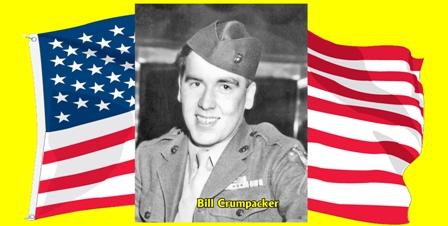|
After a great deal of conditioning and amphibious training, the division, on November 1, 1943, boarded ship and sailed for the Tarawa Atoll, Gilbert Islands. On November 20, 1943, elements of two regiments attacked the island of Betio, situated in the Central Pacific at the intersection of the equator and the International Date Line. The landing was the first amphibious assault on a coral atoll. The battle has gone down in history as a military learning experience. For instance, on Betio there was only three hours of naval shelling prior to the landing. About four months later, due to very heavy U.S. casualties on Betio, the Marshall Islands were subjected to three days of naval shelling. Some historians state Betio was a military “Shoot out at the O.K. Corral;” three days of close-in fighting, no backup, and no quarter given. As the Island of Betio was less than one square mile, the 72 hour battle is said to have been the bloodiest battle per square yard in World War II. Out of Bill’s company B-1-8, 99 of 199 made it ashore from the reef, wading in about 600 yards. Approximately 5,500 enemy troops were killed in action. As Betio was the major island in the Tarawa Atoll, the battle is more commonly known as the “Battle of Tarawa” by the public. Bill received a “Hollywood” wound on Betio, a grenade wound of minor consequence. In the Marine Corp, a nice little wound which resulted in a Purple Heart was referred to as a “Hollywood” wound. After being based in Hawaii, the Big Island, for a time, in June, 1944, the Second Marine Division landed in Saipan and then Tinian in conjunction with the Fourth Marine Division, and the Army’s 27th Division. On Tinian, July 29, 1944, an artillery shell ended his active duty. He received a medical discharge January 23, 1946, and by using the GI Bill, went on to get a college education at Fresno State. In 1993 Bill became interested in the Legion of Valor Museum through a fellow Marine, Chuck Monges, from the Second Marine Division. Chuck, who was one of the museum’s founders, asked Bill to join the museum’s volunteer staff. Because of his World War II experiences, Bill felt he had something he could share with the public. It was time to rejoin his fellow Marines by keeping patriotism alive and well. It was a most gratifying experience. Bill enjoyed meeting the visitors and sharing with them the wonderful displays in the museum. It was particularly enjoyable to be able to open the eyes of the “younger types” about our country’s military history and to share with them some of the exploits of our most honored heroes. Bill has passed away, but his memory lingers on. |

